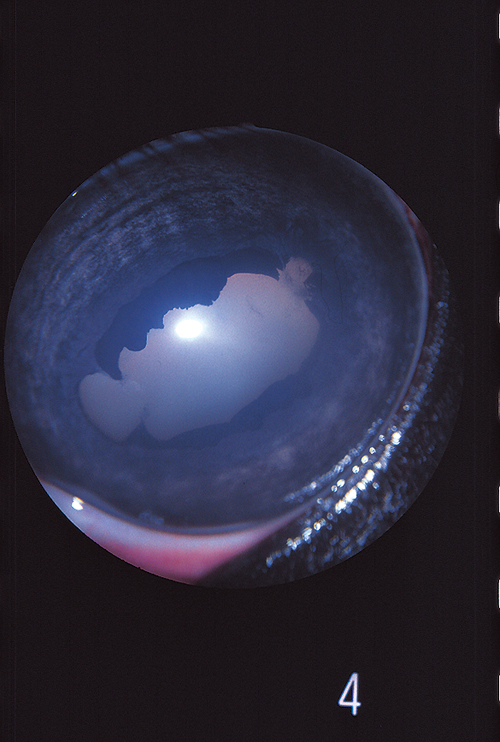Difference between revisions of "Equine Internal Medicine Q&A 14"
Jump to navigation
Jump to search
Ggaitskell (talk | contribs) |
|||
| Line 12: | Line 12: | ||
|q1=What is this lesion? | |q1=What is this lesion? | ||
|a1=Cataract due to prior uveitis and subsequent posterior synechiae. | |a1=Cataract due to prior uveitis and subsequent posterior synechiae. | ||
| − | |l1= | + | |l1= |
|q2=The horse is performing adequately. Do you recommend purchase? | |q2=The horse is performing adequately. Do you recommend purchase? | ||
|a2=No. Subsequent episodes of uveitis would be likely in the left eye, and very possibly as a future problem in the right eye. <br><br> | |a2=No. Subsequent episodes of uveitis would be likely in the left eye, and very possibly as a future problem in the right eye. <br><br> | ||
Over 50% of horses will have uveitis as a bilateral condition in time. <br><br> | Over 50% of horses will have uveitis as a bilateral condition in time. <br><br> | ||
Traumatic uveitis may have caused the left eye lesion, but unless you actually attended the trauma, medicolegal logic dictates a failed soundness examination. | Traumatic uveitis may have caused the left eye lesion, but unless you actually attended the trauma, medicolegal logic dictates a failed soundness examination. | ||
| − | |l2= | + | |l2=Corneal Ulcer - Horse |
</FlashCard> | </FlashCard> | ||
Revision as of 18:10, 5 June 2011
| This question was provided by Manson Publishing as part of the OVAL Project. See more Equine Internal Medicine questions |
During a pre-purchase (soundness) examination of a six-year-old Quarterhorse, the left eye appears normal. However, the right eye appears as in the image.
| Question | Answer | Article | |
| What is this lesion? | Cataract due to prior uveitis and subsequent posterior synechiae.
|
[[|Link to Article]] | |
| The horse is performing adequately. Do you recommend purchase? | No. Subsequent episodes of uveitis would be likely in the left eye, and very possibly as a future problem in the right eye. Over 50% of horses will have uveitis as a bilateral condition in time. |
Link to Article | |
